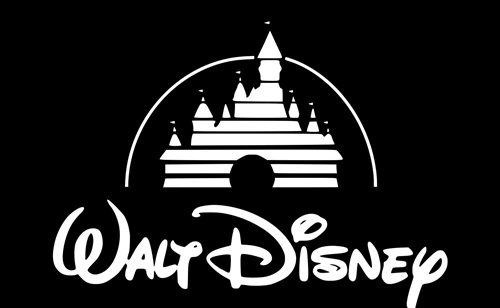The Walt Disney Company, founded in 1923, is one of the world’s largest and most iconic entertainment conglomerates. With its vast portfolio that spans media networks, theme parks, resorts, movies, and more recently, streaming services, Disney has solidified its place as a global leader in entertainment. In 2024, Disney continues to leverage its strong brand equity, strategic acquisitions, and technological innovations to maintain its dominance, while also facing emerging challenges and opportunities.

Current Overview of Walt Disney:
As of 2024, Disney remains a global powerhouse in the entertainment industry. The company has successfully expanded its streaming platform, Disney+, which is gaining momentum in both developed and emerging markets. The company’s acquisitions of Pixar, Marvel, Lucasfilm, and 21st Century Fox have strengthened its content portfolio, enabling Disney to compete with major streaming players like Netflix and Amazon Prime Video. Despite the challenges posed by the COVID-19 pandemic, Disney’s parks and resorts are bouncing back, although the company still faces high operating costs and regulatory scrutiny.
Strengths:
1. Iconic Brand and Content Library: Disney boasts one of the most recognizable brands globally, with an extensive catalog of beloved franchises such as Marvel, Star Wars, and Pixar. This powerful brand equity attracts billions of customers across various age groups.
2. Successful Acquisitions: Strategic acquisitions of major content creators, such as 21st Century Fox, Marvel, and Lucasfilm, have enhanced Disney’s creative capabilities and expanded its reach into new markets.
3. Global Theme Parks: Disney’s parks in the US, Europe, and Asia are highly profitable and attract millions of visitors annually, generating substantial revenue from ticket sales, merchandise, and hospitality.
4. Robust Streaming Services (Disney+): Disney+ has seen tremendous growth, positioning Disney as a serious competitor in the streaming industry. With exclusive content from its vast catalog, Disney+ has attracted millions of subscribers globally.
5. Financial Stability: Disney’s financial health, bolstered by diverse revenue streams from media networks, parks, resorts, and streaming, ensures the company remains resilient even in challenging economic climates.
Weaknesses:
1. High Operating Costs: Disney faces high operating expenses, especially in maintaining and expanding its global theme parks and producing high-quality content across its media platforms. These costs impact the company’s profitability during economic downturns.
2. Overdependence on Key Segments: Disney relies heavily on its parks, resorts, and media networks for revenue. This dependence was evident during the COVID-19 pandemic, which severely affected park attendance and media revenues.
3. Regulatory Challenges: Operating in multiple countries exposes Disney to complex regulatory environments, increasing compliance costs and potential risks. Additionally, the company is vulnerable to content-related controversies and data privacy issues.
4. Content Risks: While Disney has a track record of successful films and TV shows, underperforming content can lead to financial losses, especially with the high investments involved in blockbuster productions.
Opportunities:
1. Expansion of Disney+: The global success of Disney+ presents a massive growth opportunity. By expanding its streaming services into emerging markets with tailored content, Disney can increase its global subscriber base and compete effectively with streaming giants.
2. Technological Innovations: Investing in augmented reality (AR), virtual reality (VR), and artificial intelligence (AI) to enhance theme park experiences and content creation can create new revenue streams and keep Disney at the cutting edge of entertainment.
3. Franchise Expansion: Leveraging existing franchises like Marvel, Star Wars, and Pixar through new films, series, and theme park attractions will continue to drive revenue and fan engagement.
4. Sustainable Practices: Implementing eco-friendly policies across its operations, including reducing plastic use and increasing energy efficiency, can enhance Disney’s brand reputation and attract environmentally conscious consumers.
Threats:
1. Intense Competition: Disney faces increasing competition from streaming services like Netflix, Amazon Prime, and WarnerMedia. This intense rivalry puts pressure on Disney to consistently deliver high-quality, original content.
2. Economic Downturns: Disney is vulnerable to economic recessions, which can reduce consumer spending on entertainment and travel, directly affecting park attendance and streaming subscriptions.
3. Piracy and Content Theft: The rise in piracy threatens Disney’s revenue streams, particularly from its digital content on Disney+. Piracy undermines the value of Disney’s intellectual property, potentially affecting its ability to reinvest in new content.
4. Regulatory and Legal Risks: Regulatory changes, particularly regarding data privacy and intellectual property, pose ongoing risks to Disney’s global operations. Compliance costs and legal disputes can impact profitability
Future Plans:
Looking ahead, Disney is focusing on expanding its direct-to-consumer (DTC) services, particularly Disney+. The company aims to diversify its streaming content, including original programming and localized content for emerging markets. Additionally, Disney plans to invest in technological innovations in its theme parks, such as AR and VR, to enhance visitor experiences. The company is also committed to sustainability efforts, aiming to reduce its environmental footprint across all operations
Conclusion:
The Walt Disney Company remains a global leader in entertainment, with its vast content library, iconic theme parks, and growing streaming platform, Disney+. However, the company must navigate challenges such as high operating costs, intense competition, and regulatory risks. By focusing on expanding Disney+, leveraging new technologies, and adopting sustainable practices, Disney is well-positioned for continued growth in the ever-evolving entertainment landscape.